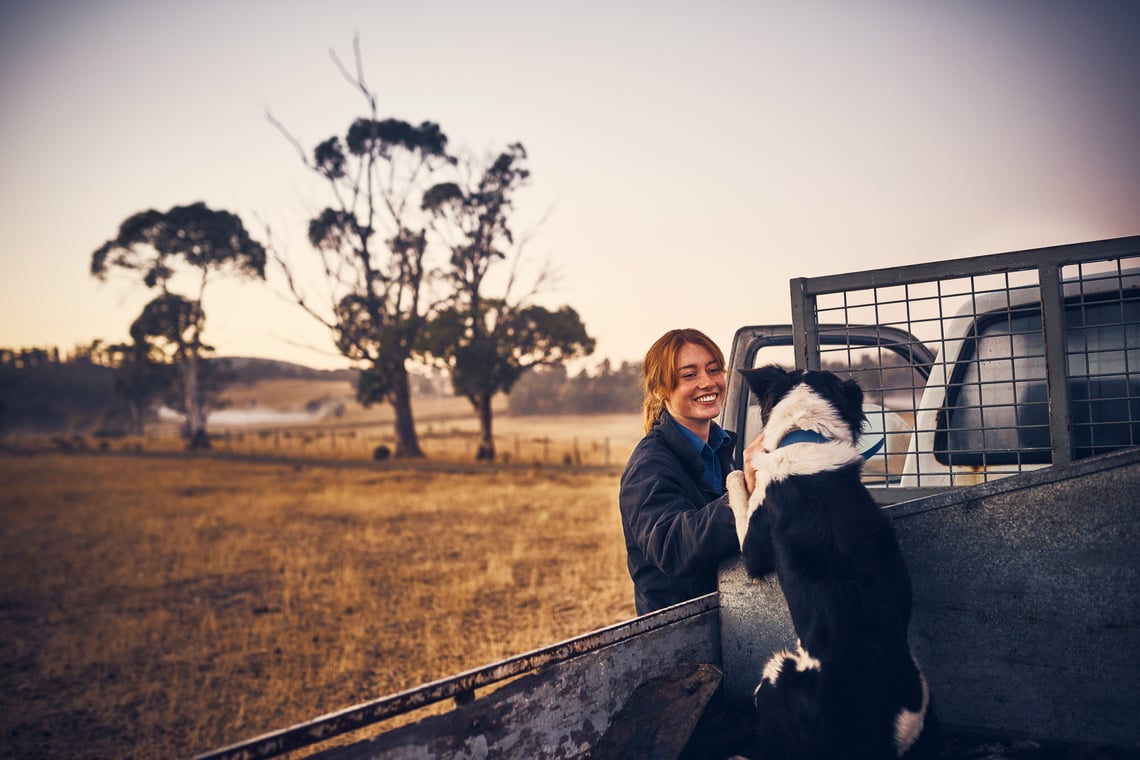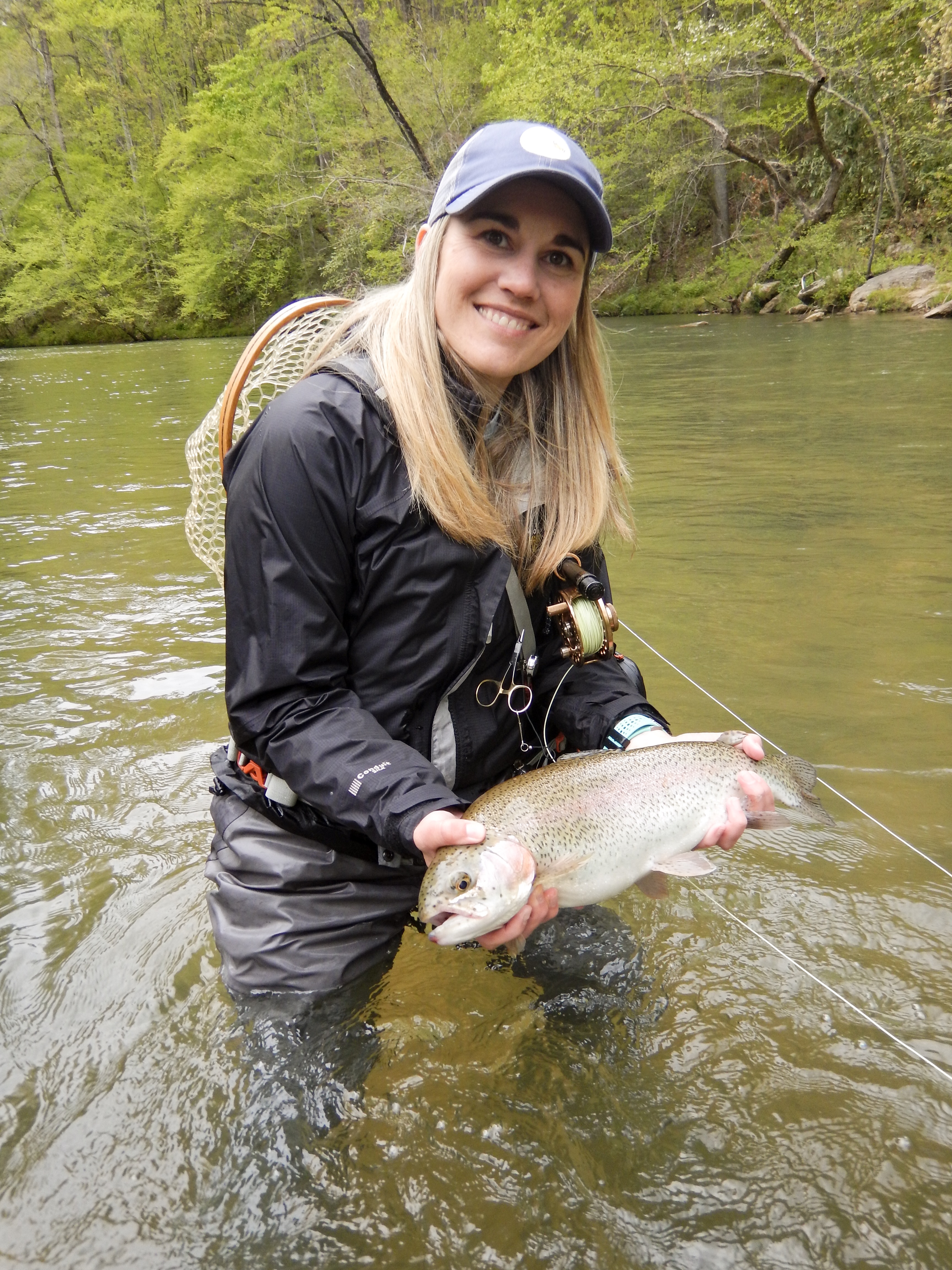Some would say life on a farm is not complete without a trusted farm dog. But, training a dog to be comfortable around tractors, livestock, wide open spaces, loud noises, and dozens of other distractions takes some planning, patience, and skill. Learn how to successfully introduce your pup to life on the farm here.
Training dogs takes patience and perseverance. Over time, most dogs learn the basic commands of sit, stay, come and several others. Introducing your dog to rural living, especially life on the farm, has its own set of challenges. By employing the same patience and perseverance as with the simple commands, introducing the pup to each aspect of the farm can be a breeze.
The keys to training in any situation are maintaining stability, establishing trust between the handler and canine and small incremental successes.
By using these techniques, most dogs can be taught to be good swimmers, steady around loud tractors and other farm or sporting equipment and calm around large animals or livestock.
When embarking on new training techniques with a pup, it's helpful to consult the experts.
Mike Stewart, owner and trainer at Wildrose Kennels, says in his book Sporting Dog and Retriever Training the Wildrose Way: “By slowly exposing your dog to new environments, people, and things — from the urban landscape to farm animals...you can minimize the problem of fear and distrust that lead to dysfunctional behavior.”
Mike Stewart’s Wildrose Kennel is the “largest breeder, trainer, and importer of British and Irish Labradors in North and South America.” Mike has trained thousands of dogs and has studied the science behind how dogs learn and communicate. His main kennel and training facility is located in Oxford Mississippi on 157 acres of water, fields and woodlands. The aim of Wildrose Kennels is to produce steady dogs in any situation through positive training methods, consistency, and training the handler/owner to be competent in handling their dog.
How to start the training process off right
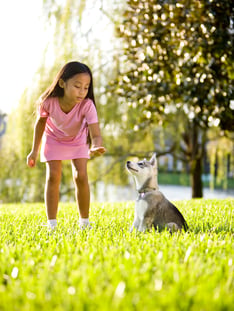 One of the essentials to a steady pup Mike emphasizes in his book is to begin training the pup with the end result in mind.
One of the essentials to a steady pup Mike emphasizes in his book is to begin training the pup with the end result in mind.
Whether it's how the dog interacts with your children or their energy level around livestock, if the pup learns they can get away with one type of behavior, it will be harder to train them to stop that behavior once it's learned.
Mike says in his book “...every interaction between you and the dog is a learning process for the youngster. You are the guide to the world and its experiences.” Therefore, as soon as the pup comes into the home he is learning. Praise the pup for the desired behavior and minimize the frequency of undesired behavior, which could mean controlling the pup’s environment to ensure success.
Farm dogs and Livestock
When these techniques are applied to introducing a pup to livestock, the pup should first be steady and competent to heel in a less distracting environment.
Some people like to introduce the dog to cows or horses through a fence (with the dog on a leash) and others find that walking through a pasture while gradually getting closer to the animal is a better way to keep the pup calm. Either way, the handler is the guide and should always be in charge in any situation.
Once the pup’s behavior increases to excitement or the pup stops responding to the handler, they should be removed to a less distracting environment to calm down. Introducing the pup to livestock may take several tries, but stay calm and confident and keep decreasing the distance between the pup and the livestock. Eventually, the pup can learn to ignore the animals and coexist. 
Teaching your farm dog to adjust to loud noises
Sudden, loud noises can frighten even the most steady dog. And around the farm, loud noises can be hard to predict. It's important to understand that dogs often feed off the energy of their owner or handler, so if you're nervous the dog will be frightened, this can teach the dog to be frightened of the noise.
Mike suggests “...introduce your student to any new experience in a way that inspires confidence, avoiding any element or approach that could startle the dog.”
When our dogs were pups, we began introducing them to loud noises by clanging dishes while in the kitchen making dinner. Over time, the dogs learned to ignore the noise all together.
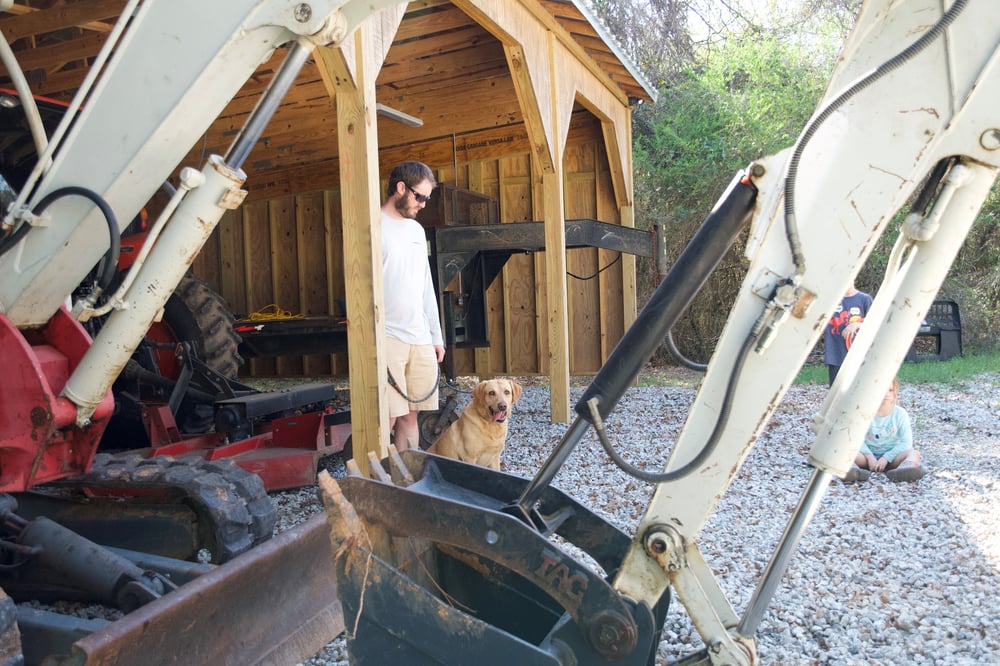
When applying this technique to noises on the farm such as a tractor starting up, it's best to gradually increase the level of the sound. For example, have the dog far enough away from the tractor that when it starts it is not alarming for the pup. Gradually decrease the distance between the pup and the noise so that when the noise is next to the pup, it is not a shock or surprise.
Mike says the key is to “proceed slowly and with the same thought process you would apply when introducing other high-stress exposures...such as gunfire.”
Early training success is key to keep the pup motivated with training
Most dogs know how to swim from an early age, but that doesn’t mean all of them enjoy getting wet. Mike says in his book “a way to introduce a very young pup to water is in a child’s wading pool with the water warmed by the sun. Once accustomed to the water in the pool, progress to the shallows of a pond.” Mike suggests wading in with the pup to his knees during his first exposure, then gradually getting deeper as his confidence improves. Make sure swimming is introduced in the warmer months, since many dogs (like humans) won’t like the cold water at first.
Training dogs requires a confident trainer and a level of trust between the canine and the handler
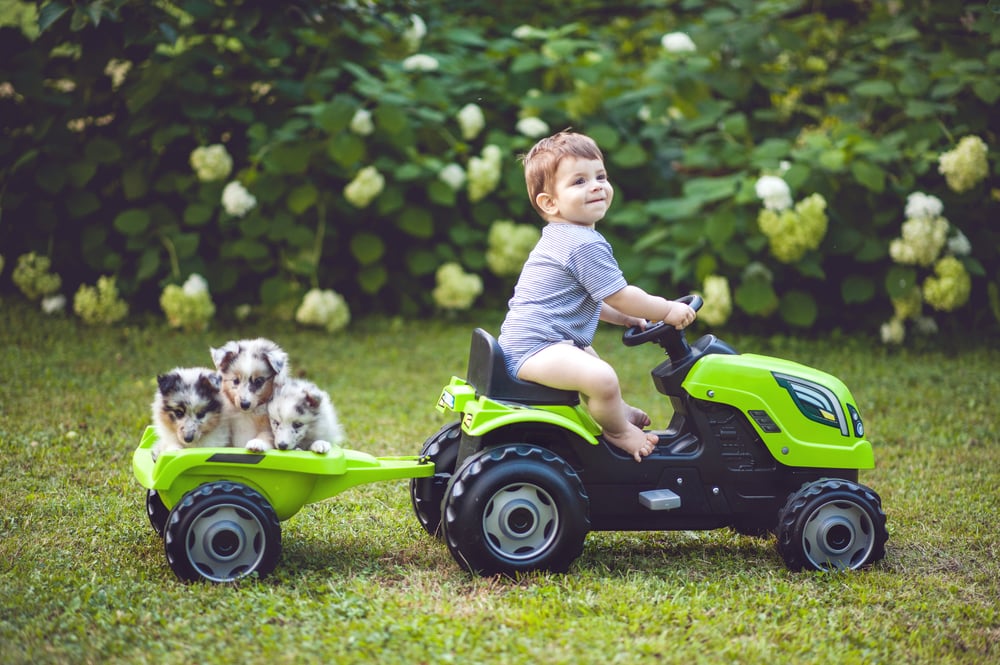
By giving the dog early successful opportunities in training situations, the handler can keep the pup motivated and continue to build the dog’s trust.
Small, incremental steps and early successes are key to training, but sometimes it's best to consult the experts. As a dog owner myself, I highly recommend the aforementioned book: Sporting Dog and Retriever Training the Wildrose Way. It is a great resource for newcomers and also seasoned trainers.
Whether your dog is graying around the muzzle or a young pup, they never stop learning and neither does their trainer.


